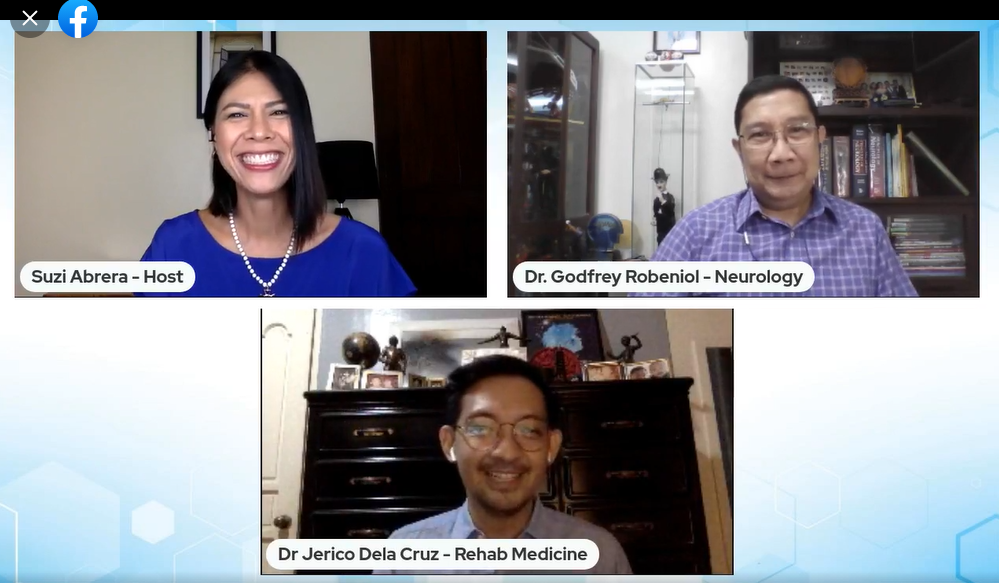To touch on the growing cases of common headaches, research-oriented pharmaceutical company, HI-Eisai Pharmaceutical Inc., gathered medical experts to tackle the bits and pieces of the matter in a free-for-all webinar titled “Madalas na Sakit ng Ulo? Huwag Balewalain, Pag-Usapan Natin!” hosted by celebrity mom and television host, Suzi Entrata-Abrera.
This is a sequel to a previous webinar on back pains caused by work from home setup, also initiated by the pharmaceutical company two weeks ago. Medical experts were once again consulted for their expertise on the growing concern on headaches among people, especially during the lockdown. Other than back pains, this time at home has also led people to experience more headaches.
To open the discussion, medical experts talked about how anyone can suffer from different types of headaches such as tension-type or migraine headaches regardless of age.
“90-95% of headaches experienced are primary headaches. The headache is the disease itself. They are not caused by other medical conditions. However, there are secondary headaches. These headaches are just symptoms of underlying medical conditions like infections, brain tumor, brain hemorrhages, etc.” Dr. Godfrey Robeniol, a neurologist, said.

A tension-type headache is caused by excessive muscle contractions in the head, neck, and shoulder area that can cause pain and tightness on both sides of the head. Triggers include stress, improper body posture, dehydration, and squinting of the eyes. This is most common in a work from home setup, with a decrease in mobility.
Meanwhile, a migraine is usually felt on one side of the head and may be accompanied by nausea and vomiting. It is a neurological disorder characterized by recurrent attacks of severe headaches that are usually throbbing and can last for a few hours to a whole day. Migraine triggers can be different for each person, but the most common factors are stress, lack of sleep, intense exhaustion, skipping of meals, food items (e.g. cheese, processed meat) and hormonal changes for women.
Working from home in a pandemic has amplified these types of headaches – looking down on our phones, sitting or lying down for long hours, straining the eyes in front of a TV or a laptop, and other unnatural body positions may cause muscle spasms that can result in tension headaches.
“There’s what we call the ‘Deconditioning Syndrome’. Not just in the neck but our whole body. We lack movement so we’re more prone to having these kinds of ailments in the musculature and especially in the head, neck, and shoulder area. It all boils down to having a bad posture and a deconditioned state of the musculature.” Dr. Jerico dela Cruz, a rehabilitation medicine expert, explained.
Deconditioning Syndrome occurs as a result of prolonged bed rest and loss of muscle strength and movement. The rehab medical expert suggests stretching or exercising for at least 20 minutes a day to manage tension headaches. To manage stress and reduce the body’s pain receptors, people can also try meditation, mind -body technique biofeedback, and massage or acupuncture. It is also important to feed and clear the mind by talking to friends or experts, like psychologists.
“Rest and sleep are good prevention as well as proper body mechanics (the way you stand, the way you pick up things, carry stuff), and proper posture (shoulders relaxed, gaze straight ahead, upright posture, neutral pelvis, gluteal muscles engaged, abdomen pulled up, shoulders, hips, and ankles in line). Managing stress well is also proven and tested. Hence, exercise, in itself, is always helpful, so make it a habit,” Dr. Dela Cruz added.
It is easy for experts to spot the various reasons for headaches to be out for control for so many people. Simple symptoms can grow to high risk conditions if not addressed immediately. Seek medical attention if you are experiencing any of these red flags: 1) sudden change in headache frequency 2) increase in severity of the pain 3) neurological signs like imbalance, doubling of vision, paralysis, and increase in sleeping time 4) headaches that wake you up from sleep and 5) history of trauma.
“It’s okay to self-medicate with OTC drugs, but in three to five days and it’s still there, seek medical help. From there we can provide the right prescription for pain relievers, muscle relaxants, antidepressants, and anxiolytics if necessary,” Dr. Robeniol said.
HI-Eisai, with its mission and vision to provide help for all, encourages making robust choices in daily life as well as consulting with a professional for a longer and healthier life. At the end of the day, personal lifestyle is an important factor and has a significant influence on one’s physical and mental health.
For more information, the full webinar can be accessed through this link: https://www.facebook.com/HI.EisaiPharama/videos/1007477743393351



